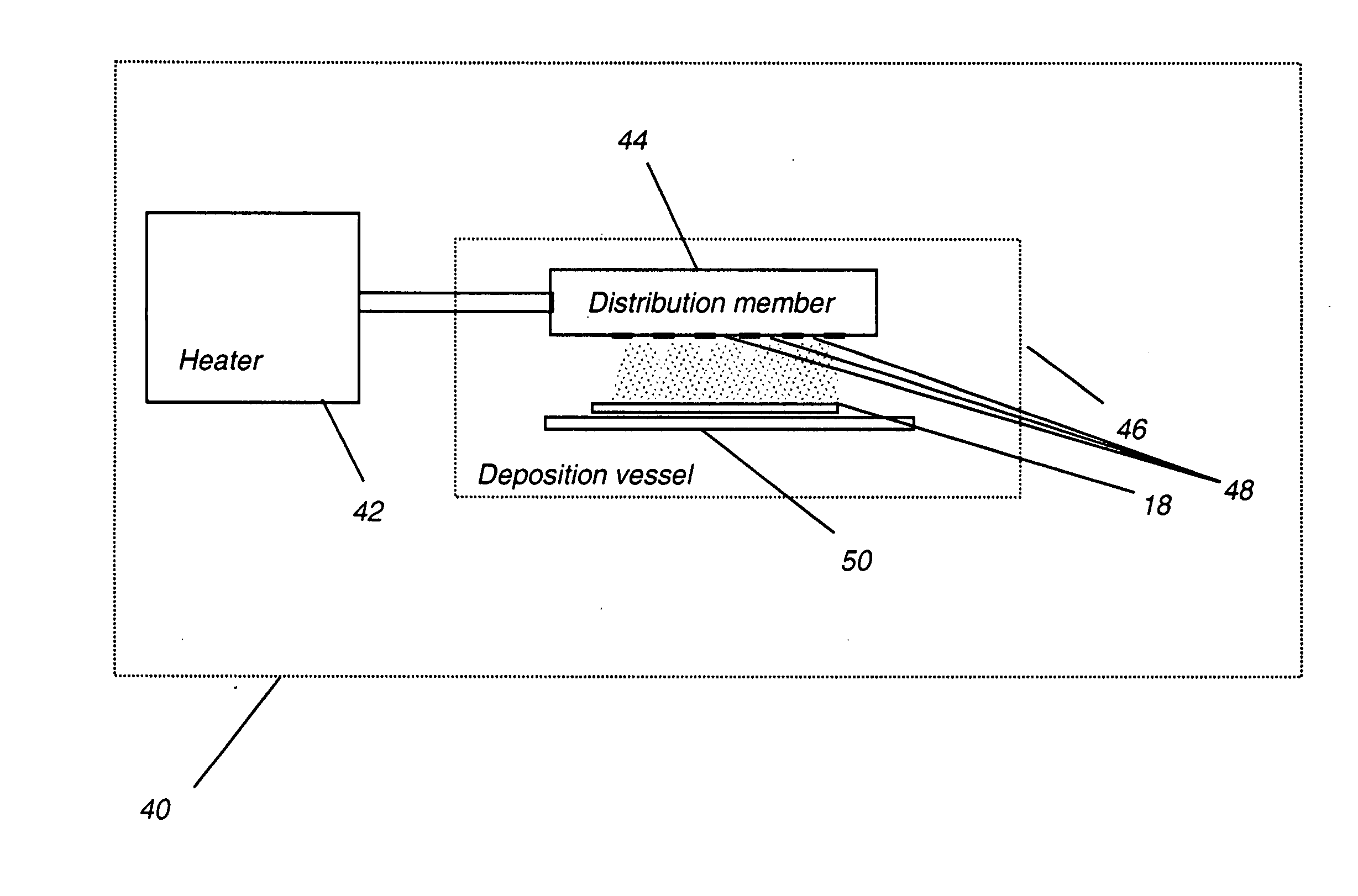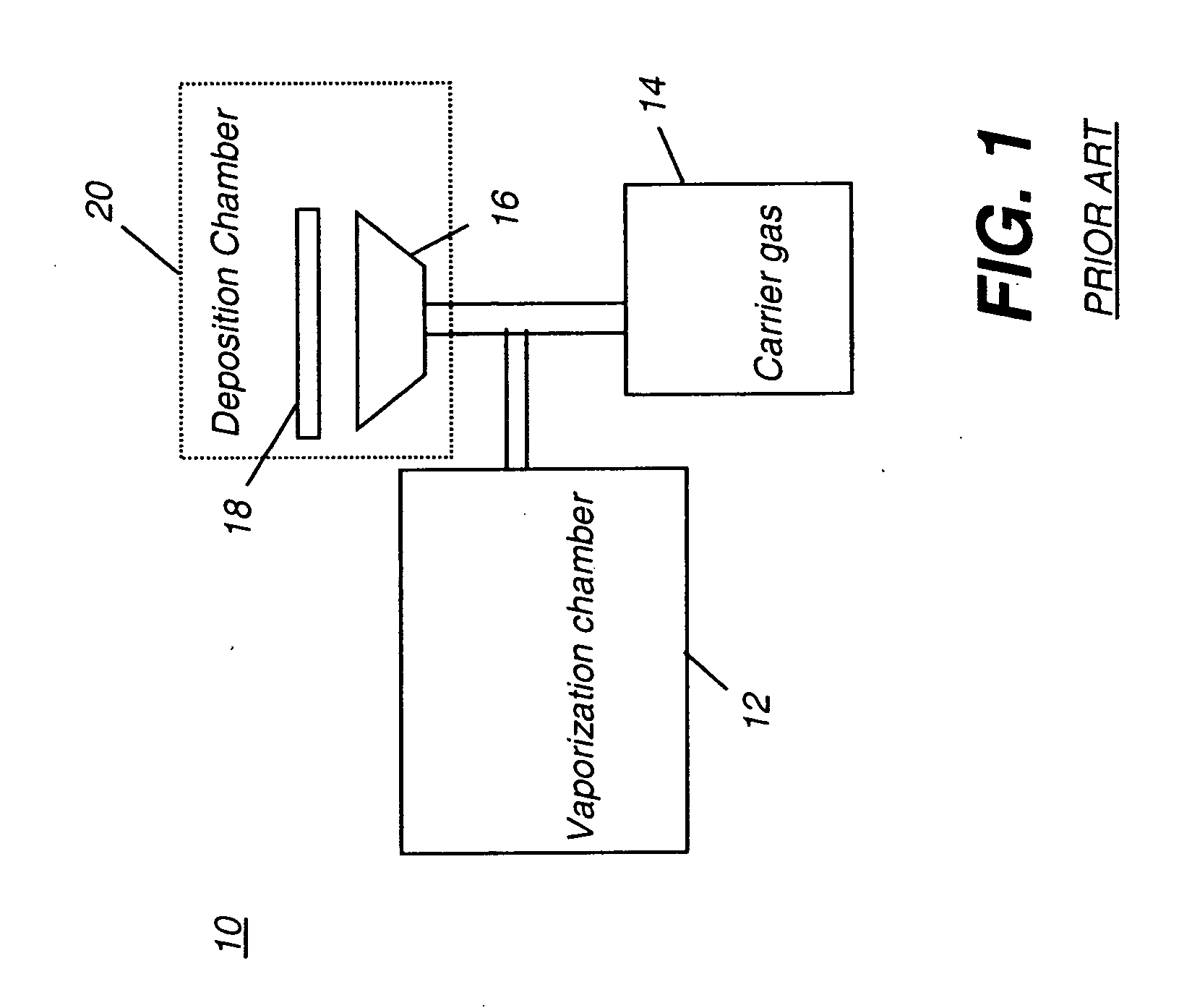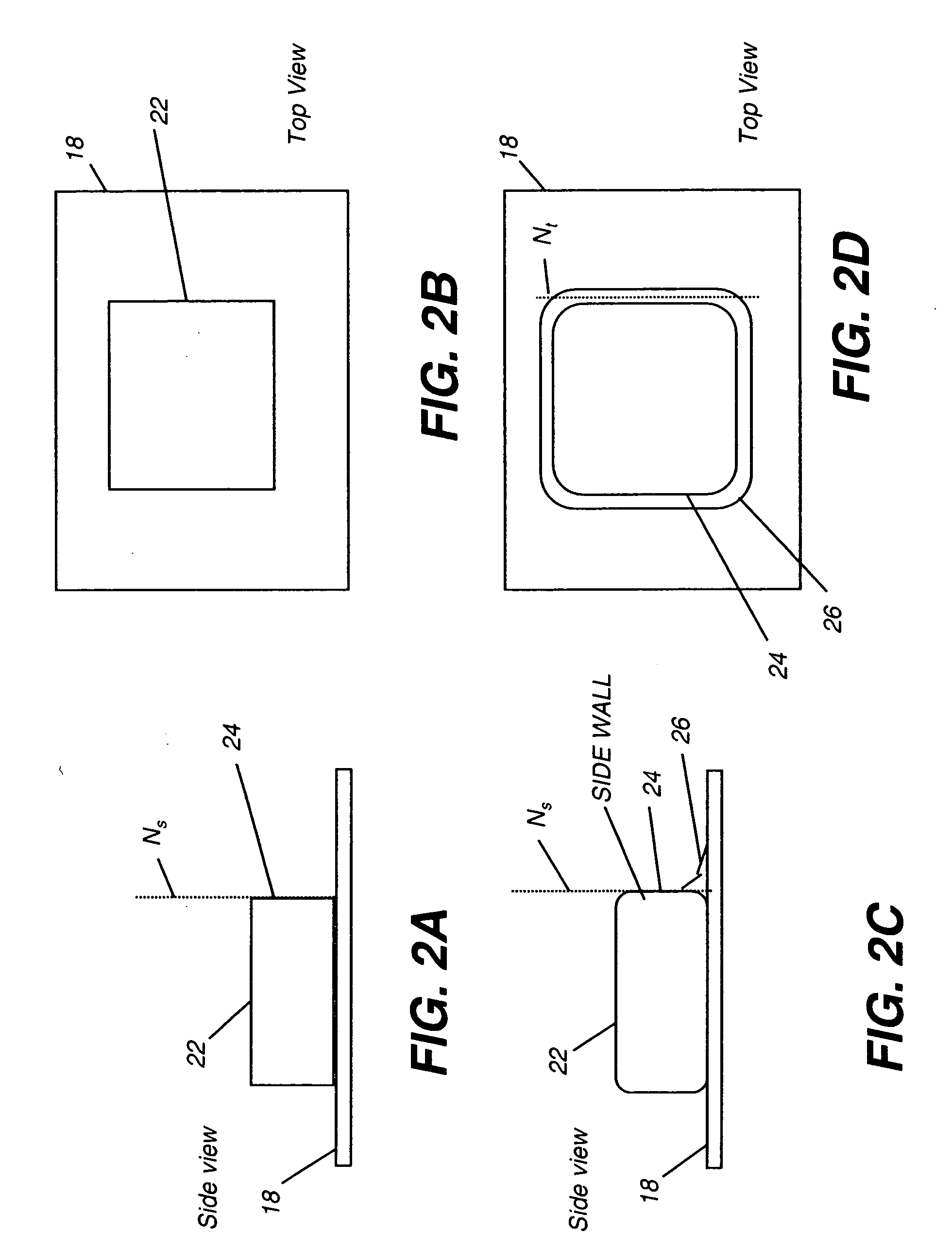Two-dimensional aperture array for vapor deposition
a technology of aperture array and vapor deposition, which is applied in the direction of vacuum evaporation coating, chemical vapor deposition coating, coating, etc., can solve the problems of affecting the masking precision of the carrier gas, the risk of decomposition of such materials, and the appreciable decomposition of organic materials. , to achieve the effect of eliminating the behavior of carrier gas underflow and high masking precision
- Summary
- Abstract
- Description
- Claims
- Application Information
AI Technical Summary
Benefits of technology
Problems solved by technology
Method used
Image
Examples
example 1
Plume Shape Exponent p=1
[0085] For this example, Equation 3 was used to integrate the contributions from a square array of apertures of lateral extent l on a substrate surface of lateral extent L spaced a distance d therefrom (see FIGS. 10 and 11). The number n of apertures on each edge of length l of the array was specified and thus determined the total number of apertures and the corresponding pitch. The emission strength (intensity) of the four apertures on the corners and the emission strength (intensity) of the apertures on the outer edges (that is, along a line extending between the corner apertures) were specified and are respectively denoted Ic and Ie. Ic and Ie are emission strengths relative to the remaining apertures, which are assigned a strength value of unity in these examples. The spatial distribution of deposition rate was determined for the various geometry and emission strength parameters. Ic and Ie and were varied to produce the best deposition uniformity. The pl...
example 2
Plume Shape Exponent p=2
[0092] As in Example 1, Equation 3 was used to integrate the contributions from a square array of apertures of lateral extent l on a substrate surface of lateral extent L spaced a distance d therefrom. The same parameters were specified and the same calculations were performed using a value of 2 for the plume shape exponent p. In this case, the critical value of Pa d was found to be approximately 1.11 (as in the above example, this critical value is assessed by examining the local uniformity near the center of the substrate, edge effects notwithstanding). The results are tabulated in Table 3. The geometrical scaling relationships for utilization and emission strength for corners and edges are shown in FIGS. 20A and 20B. In addition, points tabulated in Table 4 show how the width e of the perimeter zone of enhanced aperture emission can be further increased to improve the uniformity, but at a cost of utilization (see FIG. 19). Furthermore, the emission streng...
example 3
Plume Shape Exponent p=3
[0095] As in Example 1, Equation 3 was used to integrate the contributions from a square array of apertures of lateral extent l onto a substrate surface of lateral extent L spaced a distance d therefrom. The same parameters were specified and the same calculations were performed using a value of 3 for the plume shape exponent p. In this case, the critical value of Pa d was found to be approximately 1.22. As in the earlier examples, this critical value is assessed by examining the local uniformity near the center of the substrate, edge effects not withstanding). The results of the calculations are tabulated in Table 5. The geometrical scaling relationships for utilization and emission strength for corners and edges are shown in FIGS. 21A and 21B.
TABLE 5#holesHoledonPitchCornerEdgeUnifL (cm)(cm)l (cm)edge(# / cm)e (cm)pP · dL4 / (d2el)CenterCenter(+ / −)Utiliz15.24216.49160.9100.62531.8191.31E+031.91.430.01480.66541004102.5330.3121.2531.2494.88E+041.361.220.03260....
PUM
| Property | Measurement | Unit |
|---|---|---|
| Mass | aaaaa | aaaaa |
| Length | aaaaa | aaaaa |
| Length | aaaaa | aaaaa |
Abstract
Description
Claims
Application Information
 Login to View More
Login to View More - R&D
- Intellectual Property
- Life Sciences
- Materials
- Tech Scout
- Unparalleled Data Quality
- Higher Quality Content
- 60% Fewer Hallucinations
Browse by: Latest US Patents, China's latest patents, Technical Efficacy Thesaurus, Application Domain, Technology Topic, Popular Technical Reports.
© 2025 PatSnap. All rights reserved.Legal|Privacy policy|Modern Slavery Act Transparency Statement|Sitemap|About US| Contact US: help@patsnap.com



